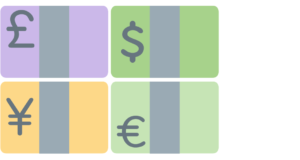Equity markets were generally positive over May. This was likely because of trade tensions easing between the USA and their major trading partners. The MSCI World (hedged into AUD) performed strongly (6% for the month).

USA
The S&P500 returned 6.3%. The NASDAQ, which is tech-heavy, returned over 9%. US equities outperformed broader Developed Markets which is not surprising in light of the fact that the USA was at the centre of trade tensions. Any easing in tariffs and trade restrictions would therefore primarily benefit the US economy.
The US corporate earnings season generally delivered good results, in spite of the previous quarter having been dominated by trade tensions. This was also likely supportive to equity market returns. Large-cap US technology companies meaningfully outperformed the broader indices.

Europe
The MSCI Europe Index (in EUR) returned 3.9%. Business activity indicators pointed to ongoing contraction in the Eurozone manufacturing sector. This contraction, though, has slowed over the first half of 2025.

Asia
Chinese equities were stronger over May, though did underperform broader indices. After agreeing to a 90-day pause on most tariffs, US and China trade delegates met in Geneva to continue trade negotiations. Perceptions that negotiations were proceeding harmoniously was a positive driver for the market.

Australia
Australian equities finished the month stronger, returning 4.2%. At the May Reserve Bank of Australia meeting, an interest rate cut of 0.25% was delivered. The RBA does not expect Australia to fall into a recession, but it remains wary of economic conditions deteriorating. The Labor government was re-elected in May, which while not a surprise, was notable in the size of the victory: the Labor party secured 94 seats in the House of Representatives, which was the most seats won in the history of the party.

Currency and bonds
Australian and Global bond returns were mixed over the month (0.2% and -0.4% respectively). Bonds recovered from particularly weak performance during the middle of May, following the passage of the USA’S new budget bill. Concerns rose that the bill may compound risks to the US fiscal deficit. US 10-year yields ended May at 4.40%, while Australian 10 year yields finished the month higher at 4.26%.
Most major developed market currencies were stronger relative to the USD over the month. Weakness in the USD has been particularly pronounced over the previous quarter. Concerns around US economic stability and uncertainty about US trade relations were the primary drivers for US Dollar weakness. The Australian Dollar was stronger against the USD (0.6% for May).


